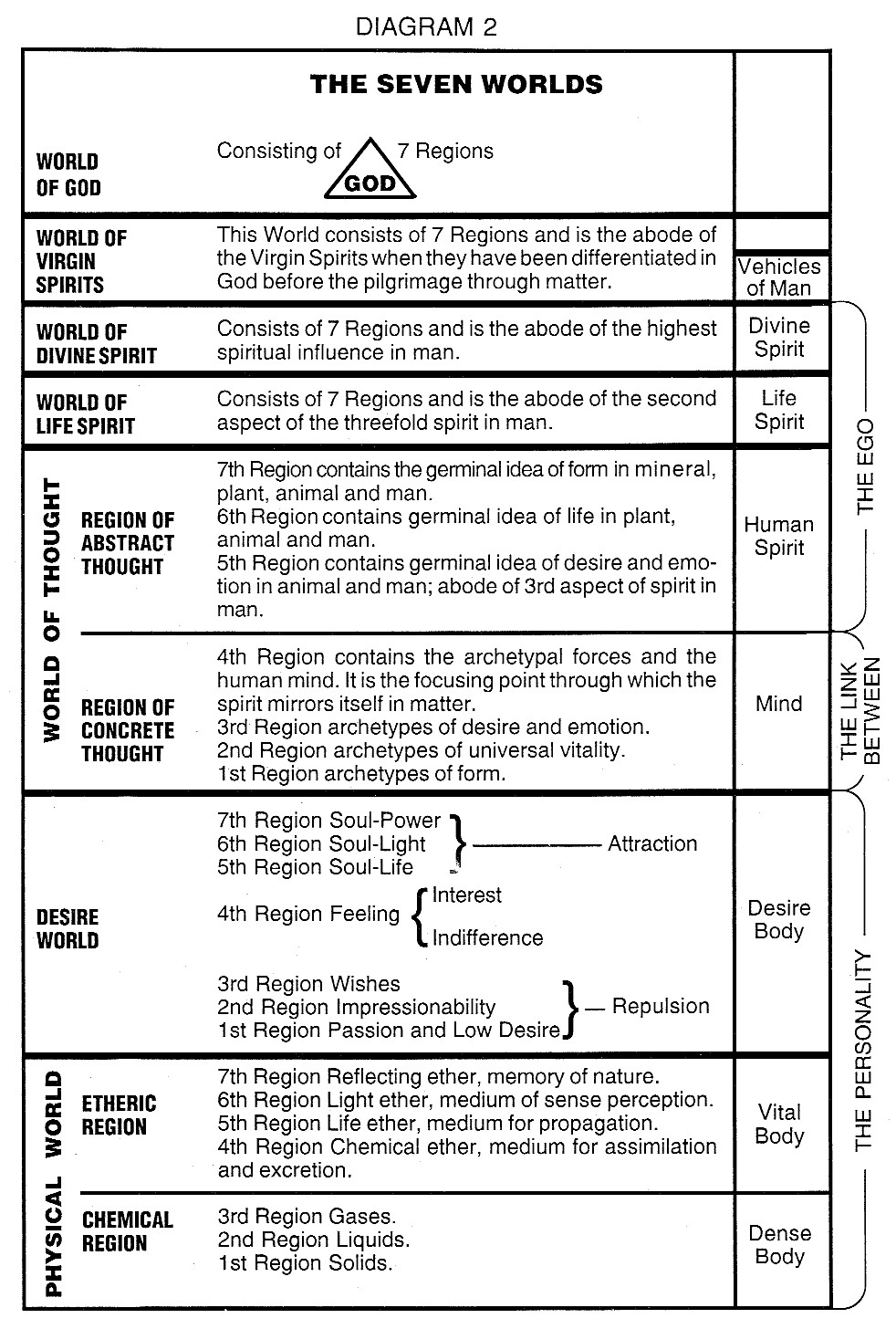
| rosicrucianU.com | ||
| Simplified Scientific Christianity |

Sagittarius is the sign of the spiritualized mind which leads to the fiery glories of the Mount of Transfiguration.
A city symbolizes a state of consciousness; the great king is the mind linked with the desire nature, the lower or mortal mind. The poor wise man who delivered the city represents that hidden wisdom, unvalued by the majority, by which the transformation of the human consciousness is achieved. Yet few know this path, and of those who know few remember to follow it.
Sagittarius, when manifesting in its lower octave, is symbolized by the cross of matter; in the higher, by the winged arrow, representative of the aspiration of the spirit. In Hebrew mysticism, "the Path of the Arrow" refers to that path which the Christ called "straight and narrow" in which few men could walk. Sagittarius is symbolized by the centaur shooting his arrow at the vaults of heaven. A modern occult maxim says that "the Mind is the Path." This is the Way of the Arrow which stops not short of God: "Wisdom is better than weapons of war." (Ecclesiastes 9:18)
Sagittarius, third of the fire signs, is the sign of the higher mind, the vivified spiritually reasoning mind, not the logician's mind. The great Beings called Lords of Minds are the Hierarchy which accompany the Sun as he transits Sagittarius each year, and from their flaming wings they tip with fire the arrow of aspiration for the disciple who seeks their companionship.
The tenth chapter symbolizes Capricorn, the higher aspect of which manifests as the birth of the Christ Child within, whereas the lower aspect expresses itself in ambitiousness, even to the use of "black magic" so called, which means merely the misuse of mental powers; i.e. "mental malpractice."
Some of the noblest rulers and leaders of history have been Capricornians; but there have been many Capricornian tyrants and autocrats also. Saturn is the planetary ruler, "the Prince of this World." The lesson most requisite to the Capricornian is humility; his great weakness is egotism. His meditation should be, "There is an evil which I have seen under the Sun, as an error which proceedeth from the ruler." (Ecclesiastes 10:5)
The spiritual Capricorn is typified in the Christ, of whom this verse might well have been written: I have seen servants upon horses, and princes walking as servants upon the Earth;" for he who was Earth's noblest prince was truly the servant of all.
The wonderful white Peace of Capricorn is that which aureoles the Earth at the holy Winter Solstice. Words are inadequate even to suggest this white glory. The Hierarchy of Capricorn are Archangels who go in and out of the Earth singing Hosannas to the King of the Year as he transits their Mansion.
The Sign of the Son of Man is the esoteric appellation of Aquarius.
These verses have reference to the vibrant genius of Aquarius, the sign of the good as yet unmanifest, which ushers in the New Age wherein the workings of cosmic Law will be understood by all, and man will have a clearer realization of the infinitude of God and of his own identity with it.
The keynote for Aquarius: "Therefore remove sorrow from thy heart, and put away evil from thy flesh: for childhood and youth are vanity." (Ecclesiastes 11:10) This passage voices the knowledge that is to be the commonplace of the dawning Aquarian Age, namely, that the only reality is Spirit, and nothing else matters. Aquarius is attuned to the planet Uranus, ruler of New Age science.
The celestial Hierarchy of Aquarius are those Angels most familiar to us in the sacred art of Christian mystic artists, as, for example, the Angels painted by illumined artist-seers such as Fra Angelico, dear to the heart of all childhood. These Angels are so very close to Earth, standing on its very threshold, that many are the eyes which have beheld them and many are the blessed ones who have entered in among their company when the Sun passes through their mansion. At this holy time of the year, in the early Christian centuries, the Baptism of Jesus was celebrated, which Christians spoke of as being a Death; and so it is to the illumined soul — a time when we go under the Waters of the Universal Spirit, and come up from them a Son of God, knowing the meaning of Christ's words: "I call you not servants but friends."
Pisces, the twelfth and last sign of the twelve signs of the Zodiac, rules over the sorrow and tears which man experiences as a result of his alienation from divine guidance. The famous twelfth chapter of Ecclesiastes contains a vivid word picture of the frailty of mortal mind and the sorrows that come to him in the prison house of the body through vast cycles of Earth lives. "Then shall the dust return to the Earth as it was; and the spirit shall return unto God who gave it." (Ecclesiastes 12:7)
These verses are descriptive of the gradual decay and disintegration of the physical body in the mortal cycle of change, which all humankind knows as old age and which is a product of the misuse of the divine creative force.
Unlike the other signs of the Zodiac, Pisces has a very intimate relationship with Earth"s humanity. Occultists say that WE are the Hierarchy of Pisces; and this is a profound Mystery. Humanity is thus one of the celestial Hierarchies. As the Hierarchy of Pisces, humanity comprises the Virgin Spirits that were differentiated by God within Himself at the dawn of creation. This does not mean physical humanity, but Virgin-Spirit Humanity, which is perfect and divine, and in metaphysical terminology made in the image and likeness of God. The keynote of the Piscean attainment is given in the words: "Let us hear the conclusion of the whole matter: Fear God, and keep his commandments: for this is the whole duty of man." (Ecclesiastes 12:13)
When the Sun passes through the Mansion of Pisces, the orthodox churches observe Lent. The time limits are not exact, but there is a correspondence. In the early Church, when the Vernal Equinox fell on the cusp of Aries, the correspondence was closer, the forty days of Lent then falling almost wholly in Pisces, the sign whose symbol is two fishes bound together. The Vernal Equinox is now in about nine degrees of Pisces, and by the precession of the Equinoxes, each year it draws closer to the Aquarian boundary line; and Lent is thus thrown farther back among the constellations, being now more in Aquarius than in Pisces as a rule. In pre-Christian times there was a fasting season corresponding to our Lent when the Sun passed through the constellation Pisces and entered Aries, as shown in the Book of Daniel. When Christ came into the world, the Vernal Equinox — which is the point on the celestial equator where the Sun crosses northward in the spring — was in about seven degrees of Aries, already close to the Piscean cusp. Since then the Vernal Equinox has preceded through the constellation Pisces until it now stands at about nine degrees of that constellation, and each year approaches closer to the cusp of the constellation of Aquarius. Thus in the Aquarian Age (during which the Vernal Equinox is in Aquarius), Lent will fall largely in the period during which the Sun transits Pisces for much of the Age, but Easter Sunday itself will fall in Pisces rather than in Aries as it has done during the greater part of the current Piscean Age. The astronomical rule for determining Easter is that Easter shall be the first Sunday after the first Full Moon after the Vernal Equinox.
Our humanity — the Hierarchy of Pisces — has, in the Piscean Age, been tried by fire and by water in preparation for a wholly new departure in spiritual evolution. When the Sun passes through Pisces each year by transit, the waters of the human soul are deeply stirred, and many Illuminations take place as the aspirant, like the Christ of Gethsemane, learns to rise out of the waters of sorrow and tribulation on the golden wings of the New Sun. The keynote of Pisces is, therefore, the same as the ancient Sanscrit maxim, Om tat sat, I AM THAT, or, in the words of Moses, "I AM THAT I AM."
— Corinne Heline

|

|

|
|
|
Contemporary Mystic Christianity |
|
|
This web page has been edited and/or excerpted from reference material, has been modified from its original version, and is in conformance with the web host's Members Terms & Conditions. This website is offered to the public by students of The Rosicrucian Teachings, and has no official affiliation with any organization. | Mobile Version | |
|